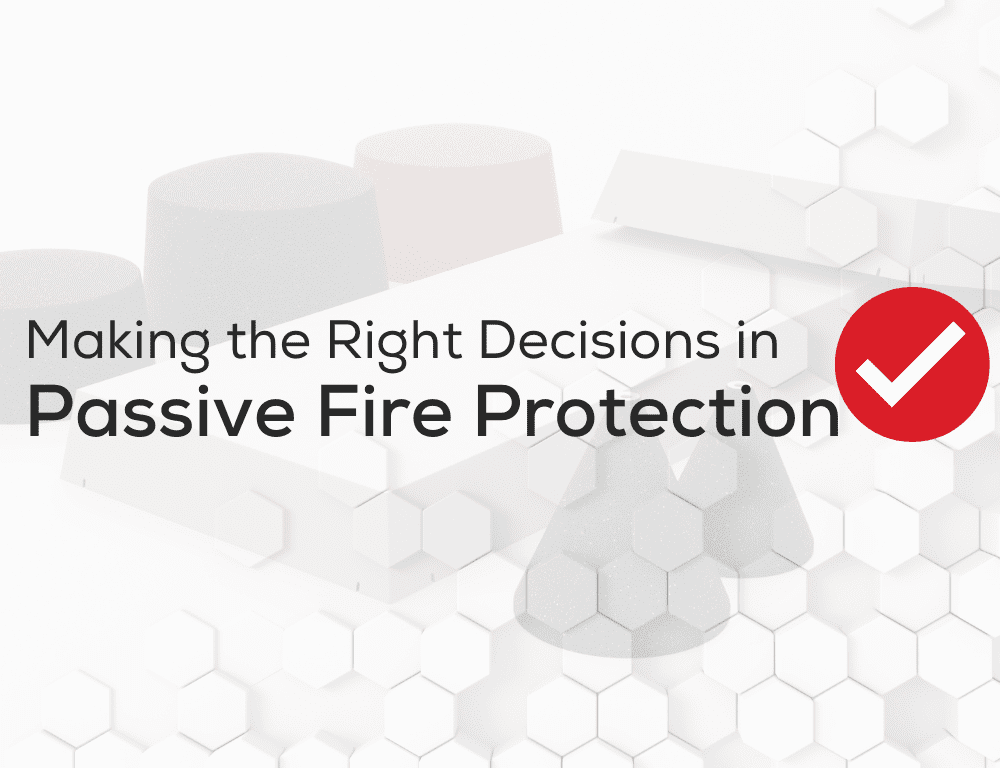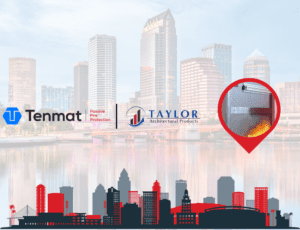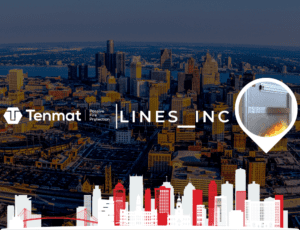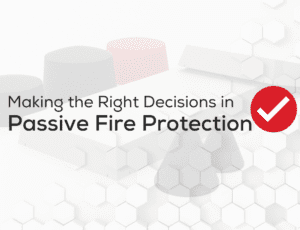Navigate through the decision-making process of selecting appropriate passive fire protection with confidence.
Shaping the Ultimate Toolbox of PFP Solutions.
Passive Fire Protection – one of the most highly discussed topics in modern-day construction projects. However, there are a multitude of questions that arise when discussing the implementation of passive fire protection into these projects. Whether you need to determine which form of passive fire protection you need to specify, or which material aligns with your demands, it is critical to identify the answers to these questions to ensure no timely delays or astronomical labor + material costs. To reduce the negative effects of not answering all the key questions, we composed a quick guide of the top five key questions to consider when specifying passive fire protection into your project. Shall we kick things off?
Identifying the Application.
Constructing a new K12 library addition? Developing an elegantly designed modern façade structure? In new construction and redevelopment projects, there is always a demand for a proper passive fire protection system – the question is which one to specify? Often, passive fire protection solutions and materials are implemented in the case, where an opening is left unprotected. This opening can be presented in a wall, ceiling, floor/ceiling assembly, ventilated air cavity, and so forth. To ensure your structure is properly fire rated, it is critical to check with your local building codes and review where passive fire protection are mandatory.
It’s important to note each application requires different forms of passive fire protection, due to numerous unprotected openings and building code standards varying on the structure’s purpose and classification. To provide clarity on where to begin in the decision process of selecting the appropriate passive fire protection solutions and materials, Tenmat offers a helpful resource on where we can direct you to the appropriate fire-rated solutions, depending on your chosen application. To view and use this tool, please click here.
Determining the Best Material for Your Project.
With the construction landscape demanding ongoing improvements in PFP technology, manufacturers have developed and presented multiple versions of firestopping solutions and materials. As a result, it is imperative to decide which material composition works best for your application. For example, in a ventilated rainscreen cavity, a material which can meet the demands of both the cavity’s performance levels and stringent building code regulations – is critical to the outcome of the project’s success. If you specify a fire-rated solution not appropriate for the application itself, it can jeopardize the functionality of the structure itself, the integrity of the fire-rating as time passes, and the lead times + costs of an active project.
To determine which material is ideal for your structure, it is important to properly research how each material performs in the circumstance of an active fire. Adding on, it is vital to also ensure the material + solution was properly fire tested and certified by a third-party testing facility – verifying the material’s integrity. However, the composition of the material itself isn’t the only element that needs to be accounted for. Let’s explore further on how solution’s composition plays a significant role further into the decision-making process.
Meeting Your Fixture’s Requirements.
In addition to a solution’s material composition, it is ideal to review what type of opening the solution will be protecting. Whether it be an unprotected ceiling opening caused by an in-ceiling loudspeaker or an unprotected wall penetration from an optical cable, it is ideal to assess on which solution will effectively reinforce the opening. In the current landscape, available fire-rated solutions and materials are very specific on what openings they can protect – which is ideal to an extent. However, we often find these solutions are so detailed – to the point, they can only cater to certain manufacturers and/or brands.
To avoid this issue, Tenmat has formulated its advanced passive fire protection solutions and materials to meet the standards of a diverse range of applications – while standardizing our products to meet various manufacturers and models of fixtures. With its ability to be activated by heat, our intumescent technology can meet a multitude of demands, whether it be the designated unprotected opening, the sizing of the opening, or the type of fixture presented – regardless of model or manufacturer.
Compliance with Building Code Standards + Regulations.
When specifying passive fire protection, one of the most arguably important factors is the solution’s ability to meet the required building code regulations. With each application, the standards of passive fire protection vary. For example, the level of passive fire protection for a healthcare facility will contrast differently than the level required in a new construction multi-family. Hence, it is critical to properly research on if your fire-rated solution can properly upload the fire rating standard, whether it be a one-hour rating or two.
To follow up from the previous statement regarding the selection of properly tested and certified fire-rated solutions, let’s get into why this is important. When specifying passive fire protection into your project, it is imperative that these solutions are protecting the lives and properties in our communities – not just stating it. To solidify its capability in protection, these solutions undergone these tests to see it can withstand the conditions of a real fire outbreak. As a result, building code regulations explicitly rely on these properly tested and certified solutions to safeguard our present and future communities.
Installation & Integration.
Now, that we covered all aspects of the fire-rated solution itself – let’s talk about the installation of the solution. Often, installation of passive fire protection tends to be one of the last considerations in the selection of the decision-making process; however, it is critical. Whether you are implementing fire-rated solutions in new construction and redevelopment projects, installing a labor-heavy and/or expensive solution can be damper on any job. Therefore, it is ideal to research and invest in the most cost-effective solution for your project. For example, if you need to install a fire-rated solution in a pre-existing ceiling, it would be favorable to specify a fire-rated solution, such as Tenmat’s Fire-Rated Covers which can easily be installed into the ceiling. If you were to go forward with a solution, whereas you need to bring down the ceiling, such as a traditional drywall box, it would eventually lengthen the time of the project and cost you high amounts in both material + labor costs. Furthermore, it is extremely important to consider the installation process of your fire-rated solutions and materials.
Closing the Door on Doubt.
Selecting the right passive fire protection for your project is not just about compliance—it’s about ensuring safety, efficiency, and long-term reliability. By understanding your application, choosing the best material, meeting fixture requirements, adhering to building codes, and considering installation logistics, you can confidently navigate the complexities of fire-rated solutions. At Tenmat, we are committed to providing high-performance passive fire protection products that align with your specific project needs. Whether you’re specifying solutions for a large-scale development or a specialized retrofit, our expertise and innovative materials are here to support you every step of the way.
Ready to take the next step in fire safety? Explore our comprehensive range of fire-rated solutions and find the perfect fit for your application today. Click Here to Learn More.






